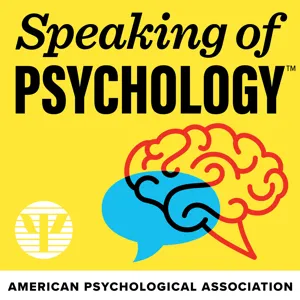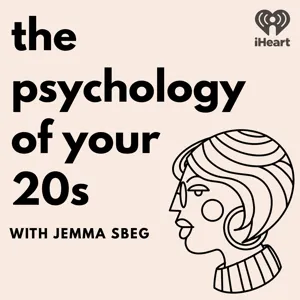Podcast Summary
Seasonal Depression: A Type of Clinical Depression with Seasonal Pattern: Seasonal Affective Disorder (SAD) is a form of depression that occurs during specific seasons, causing major depressive episodes, weight and appetite changes, sleep disturbances, fatigue, worthlessness, difficulty concentrating, and recurrent thoughts of death or suicide, lasting up to 5 months. Treatments include light therapy and psychotherapy.
Seasonal Affective Disorder (SAD) is a type of clinical depression that recurs during specific seasons, most commonly during winter months. Unlike regular depression, the pattern of SAD is seasonal. The symptoms of SAD include major depressive episodes, such as losing interest in activities, significant changes in weight and appetite, sleep disturbances, feeling persistently tired, worthlessness, difficulty concentrating, and recurrent thoughts of death or suicide. These symptoms can last for up to 5 months and can begin as early as the end of daylight savings time in November. It's important to note that SAD is a subtype of clinical depression, and those experiencing it may require professional help. The good news is that there are treatments available, such as light therapy and psychotherapy, that can help manage the symptoms of SAD. If you or someone you know is experiencing symptoms of depression, it's important to reach out to a mental health professional for help.
Seasonal Depression: October to February: Seasonal Affective Disorder (SAD) is a type of depression that follows a seasonal pattern, predominantly affecting women, with symptoms starting in October and peaking in January-February. Causes are linked to disrupted circadian rhythms due to shorter daylight hours, but more research is needed.
Seasonal Affective Disorder (SAD) is a type of depression that follows a seasonal pattern, with symptoms typically starting in October and peaking in January and February. This may be due to the holiday season keeping people engaged and distracted during December, while the lack of activities and longer winter months ahead can exacerbate feelings of depression. The exact cause of SAD is not yet known, but it's believed to be related to a disruption in circadian rhythms due to shorter daylight hours during winter. Women are more likely to be affected by SAD, but the reason for this is still unclear. Overall, while there have been advancements in understanding SAD, there is still much to learn about its causes and how to effectively treat it.
Seasonal affective disorder affects women more often than men, possibly due to their tendency to ruminate.: Seasonal affective disorder, more common in colder regions, affects women disproportionately due to their tendency to ruminate, and CBT is an effective treatment.
Seasonal affective disorder (SAD) affects women more frequently than men, with some studies suggesting a ratio of up to 4:1. This gender difference may be due to women's tendency to ruminate, or repetitively think over negative emotions, which can worsen depressive symptoms. SAD is more common in colder, northern regions, but can also occur in warmer areas with shorter days. A form of cognitive behavioral therapy (CBT) has been found to be highly effective in treating SAD, while previous treatments included light therapy which has been used since the 1980s. The discussion also touched upon the correlation between latitude and SAD prevalence, with higher rates found in areas further from the equator. Some people may be unable to outrun their SAD, even in warmer climates, suggesting a deep-rooted vulnerability.
Learning to cope with Seasonal Affective Disorder through Light Therapy and Cognitive Behavioral Therapy: Light therapy and CBT are effective treatments for Seasonal Affective Disorder, with light therapy simulating an early dawn to regulate circadian rhythms and CBT teaching skills to manage thoughts and behaviors to improve mood and cope with symptoms.
Light therapy and antidepressant medications are the first-line treatments for Seasonal Affective Disorder (SAD). Light therapy, which simulates an early dawn to help regulate circadian rhythms, has a remission rate of about 50% in clinical trials. Antidepressant medications, such as fluoxetine and bupropion XL, have also been approved for treating and preventing SAD. However, cognitive behavioral therapy (CBT), a non-pharmacologic alternative, is gaining acceptance as an effective treatment for SAD. CBT, which has been used since the 1960s for non-seasonal depression, can help individuals learn skills to cope with symptoms and reduce the risk of relapse. Light therapy works by simulating an early dawn to help regulate circadian rhythms, which are disrupted in SAD. CBT, on the other hand, helps individuals learn skills to manage their thoughts and behaviors to improve mood and cope with symptoms. Both treatments offer benefits for individuals with SAD, and the choice between them may depend on individual preferences and responses.
Exploring the Effectiveness of Light Therapy and CBT for Seasonal Affective Disorder: A current study is investigating the long-term effectiveness of both light therapy and Cognitive Behavioral Therapy for Seasonal Affective Disorder, with preliminary results suggesting that CBT may have better long-term outcomes.
For individuals with Seasonal Affective Disorder (SAD), their bodies may still be producing melatonin, keeping them in a state of internal night even when external cues suggest it's time to wake up. Bright light therapy in the morning is designed to suppress melatonin production and help reset the body's rhythm. However, the exact mechanism of how light therapy works is still a theory and not yet proven through extensive research. A current 5-year clinical trial, funded by the National Institute of Mental Health, is investigating the effectiveness of both light therapy and Cognitive Behavioral Therapy for SAD. The study, which involves 160 adults, is still in its early stages, with only the first cohort of participants having completed treatment last winter. Previous research has shown that both light therapy and CBT are effective treatments for SAD during the initial 6-week period in the winter. However, when followed for the next 2 winters, those who received CBT had fewer relapses and less severe symptoms compared to those who received light therapy. This pattern is consistent with non-seasonal depression studies, where CBT has been found to have better long-term outcomes. The goal of the current study is to confirm the efficacy of both treatments through rigorous scientific replication. Additionally, the study is exploring potential biomarkers to better understand the underlying mechanisms of treatment outcomes in light therapy and CBT.
Navigating the complexities of light therapy for SAD: Consult a healthcare professional for guidance, ensure proper device specifications, determine correct dosing schedule, and manage potential side effects for effective and safe light therapy treatment for SAD.
Effective light therapy for Seasonal Affective Disorder (SAD) requires careful supervision and consideration due to the lack of FDA regulation and variability in products on the market. Researchers are studying the cause and effect relationships of changes in the body that predict improvement in depression during light therapy, as well as the enduring effects on relapses and symptom severity. Navigating the industry to find an effective device with the correct specifications, determining the appropriate dosing schedule, and managing potential side effects are crucial for successful light therapy treatment. It's essential to consult a healthcare professional for guidance and to ensure a proper, safe, and effective treatment plan.
Seasonal Affective Disorder can present as mania or hypomania during spring and summer for some individuals: Seasonal Affective Disorder can manifest as depression during winter, but also as mania or hypomania during spring and summer for some individuals. It's a transdiagnostic construct that can apply to various mental health conditions, including anxiety, eating disorders, and substance use disorders. Not all cases follow the typical winter depression pattern.
Seasonal Affective Disorder (SAD) is not limited to depression during the winter months, but can also manifest as mania or hypomania during the spring and summer for some individuals. Approximately 35% of people with SAD have a bipolar presentation, meaning they experience depression in the colder months and hypomania or mania in the warmer months. Seasonality is a transdiagnostic construct, meaning it can apply to various mental health conditions, including anxiety disorders, eating disorders, and substance use disorders. Some people may even experience seasonal depression during the summer months, which could be triggered by heat and humidity or too much light. It's important to remember that the diagnostic criteria for SAD only require major depression that recurs specifically in certain seasons, and a minority of cases may present with symptoms during the summer months.
Recognizing and Treating Seasonal Affective Disorder: Seek professional help for Seasonal Affective Disorder, as research shows promising results for thermoregulatory treatments and effective treatments like light therapy, antidepressants, CBT, and behavioral activation exist.
Seasonal Affective Disorder (SAD) is a legitimate mental health condition, and it's essential to recognize its signs and symptoms, especially during seasons with less sunlight. The NIMH conducted research on thermoregulatory treatments for SAD, which showed promising results, but more research is needed. If someone suspects they have SAD, it's crucial to consult a mental health professional for a definitive diagnosis and appropriate treatment, such as antidepressants, CBT, or behavioral activation. Skepticism about the validity of SAD is unfounded, considering the extensive research base and the availability of effective treatments like light therapy. The public generally understands SAD, but misconceptions exist, such as believing it's only an extreme variant of depression or that it's not a real condition. In reality, SAD is a continuum of depressive symptoms that can affect anyone living in areas with limited sunlight.
Understanding Seasonal Affective Disorder and Winter Blues: Mild winter blues can be managed through staying active, maintaining routines, and practicing CBT. Severe symptoms may indicate SAD, requiring professional help.
While it's normal for people at higher latitudes to experience some changes in sleep, appetite, and energy levels during the winter months, those with more severe symptoms may be suffering from Seasonal Affective Disorder (SAD). For those with milder symptoms, known as "winter blues," staying active and engaged through indoor or outdoor activities, maintaining routines, and practicing principles from cognitive behavioral therapy can help keep spirits up until spring. If you suspect you may have SAD, it's important to consult with a mental health professional for a proper diagnosis and treatment plan. Overall, recognizing and addressing the impact of seasonality on mood and well-being can lead to improved coping and overall mental health.
Exploring Psychology Through Speaking of Psychology Podcast: Stay updated on psychological research and discoveries by listening to Speaking of Psychology Podcast, available on popular platforms and the show's website.
Speaking of Psychology, a podcast by the American Psychological Association, provides valuable insights into various psychological topics. You can access previous episodes on popular podcast platforms like Apple, Stitcher, and Spotify, or on the show's website, speakingofpsychology.org. So, whether you're a mental health professional, a student, or just curious about psychology, this podcast is a great resource to explore and learn from. Don't miss out on the latest episodes and stay informed about the latest psychological research and discoveries.





